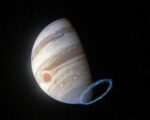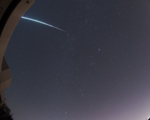Intense Thunderstorms on Jupiter May Alter Its Colour and Visual Features

Newly captured images of Jupiter have revealed two enormous thunderstorms brewing within the planet’s Southern Equatorial Belt (SEB). These massive storms are expected to produce green lightning, a rare phenomenon on the gas giant, and may lead to significant changes in the belt’s distinctive reddish-brown colour. Observers speculate that the intensity of these storms could alter the visual appearance of Jupiter’s surface, adding to the already dynamic and ever-changing features of the planet. This latest discovery has sparked great interest among astronomers and space enthusiasts alike, as the effects of these storms unfold.
The images, taken by astrophotographer Michael Karrer on November 30 using an 8-inch Celestron telescope, offer a striking view of two prominent white patches within the SEB. These patches, identified as massive thunderstorms, have been the subject of discussion by John Rogers, an astronomer with the British Astronomical Association. According to Rogers, similar storms were observed on Jupiter between 2016 and 2017, but this new occurrence appears to be much larger in scale, making it a noteworthy event for planetary scientists.
The thunderstorms, which are believed to extend nearly 100 kilometers beneath Jupiter’s thick atmosphere, are among the largest and most intense ever recorded on the planet. While their exact size is still being studied, it is estimated that the storms’ widths are likely greater than the entire diameter of Earth. The storms not only bring extreme weather but also produce green lightning, a striking contrast to the blue lightning seen on Earth. This unusual lightning colour is a result of atmospheric ammonia on Jupiter, as opposed to the water vapour responsible for Earth’s blue lightning. NASA research has previously documented this phenomenon, further supporting its presence on the gas giant.
As the storms continue to rage within Jupiter’s atmosphere, their long-term effects on the planet’s appearance remain uncertain. The potential for the SEB’s reddish-brown hue to be diluted could lead to dramatic visual changes that would alter how we view the planet. With further observation and study, scientists hope to gain a deeper understanding of these storms and their broader implications for the atmospheric dynamics of Jupiter, a planet known for its fierce weather patterns and ever-shifting appearance.





















